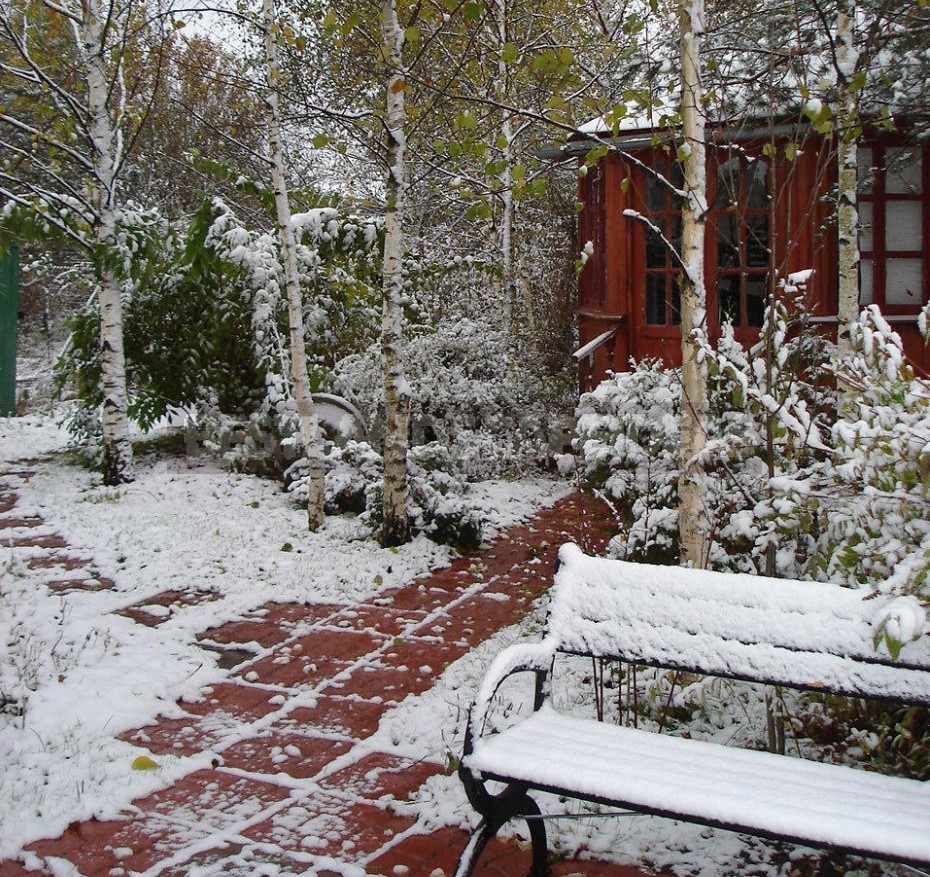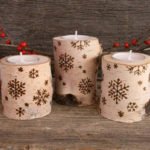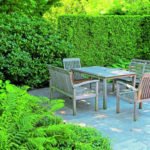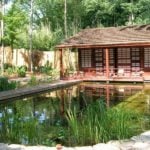The change of seasons gives the garden the opportunity to constantly transform. He’s always on the move — from one season to the next. At the same time, a well-planned plot is good at any time: in spring, when nature just wakes up and pleases us with primroses; and in summer, when it is buried in the lush splendor of flower beds; and in autumn, brightly withering; and in the off-season, when the snowfall creates a very special picture, so different from the usual appearance of a summer garden.
The brevity and monochrome of the winter scenery make certain challenges and set special conditions for the owners. Those who need to show an extraordinary imagination to make new decorative solutions in their winter garden. Provided, of course, that the owners are in their garden in the winter.
The Enchanted World
The snow hides the flaws of the homemade design. Greenhouses, beds and flower beds are covered with deep snowdrifts at this time, and one can only guess what was there in the summer. Any trash that is necessarily present in every garden is also hidden by snow. The lush white blanket covering the garden creates an amazing picture of beauty.
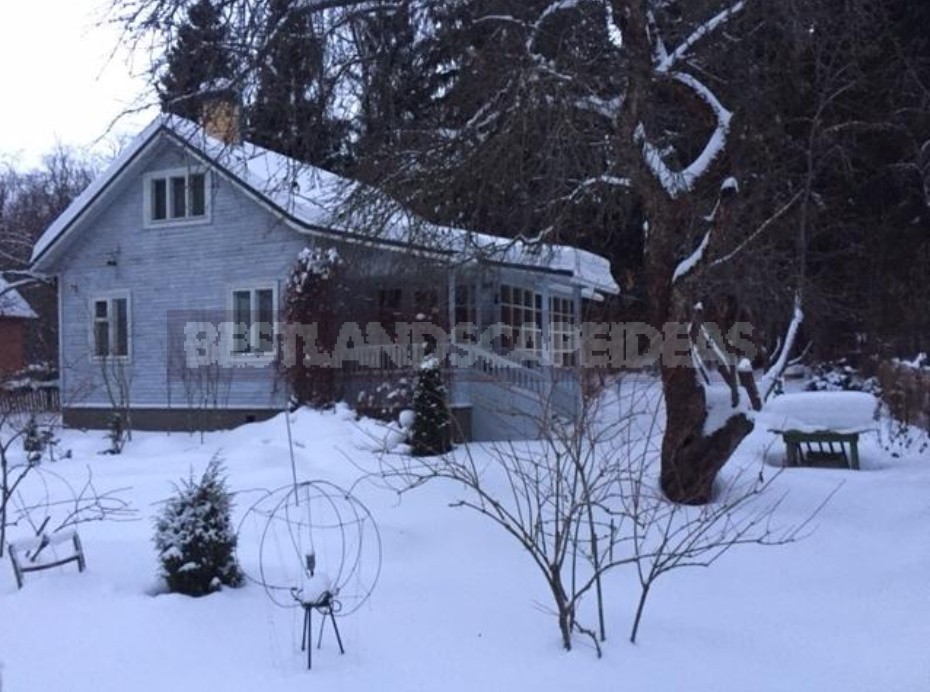
But only at first glance it may seem that in winter the garden is a sad sight. This is not quite true. First of all-because there are not only white and black colors. The sparkling whiteness of the snowdrifts is complemented by colorful accents, such as barberry, aronia and viburnum berries.
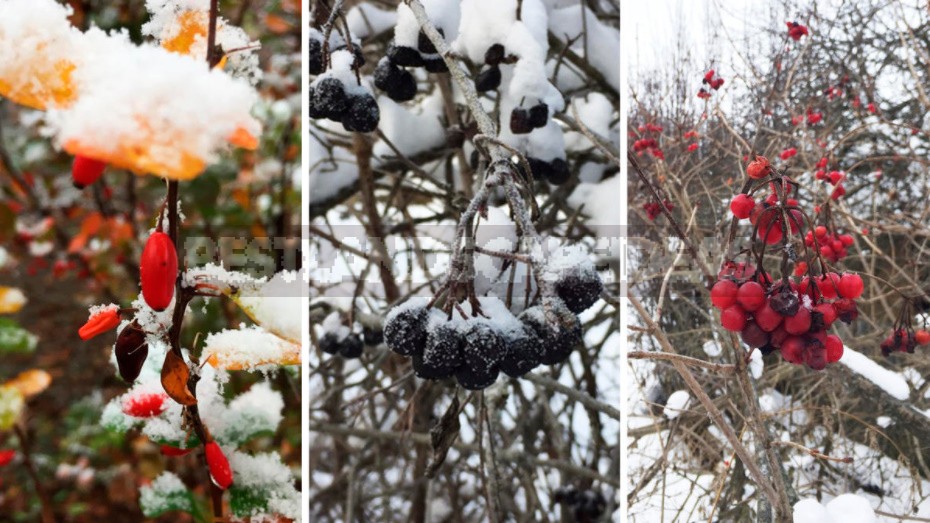
Yellow catkins of alder, scarlet clusters of mountain ash and pink “pearls” of snowberry attract the eyes.
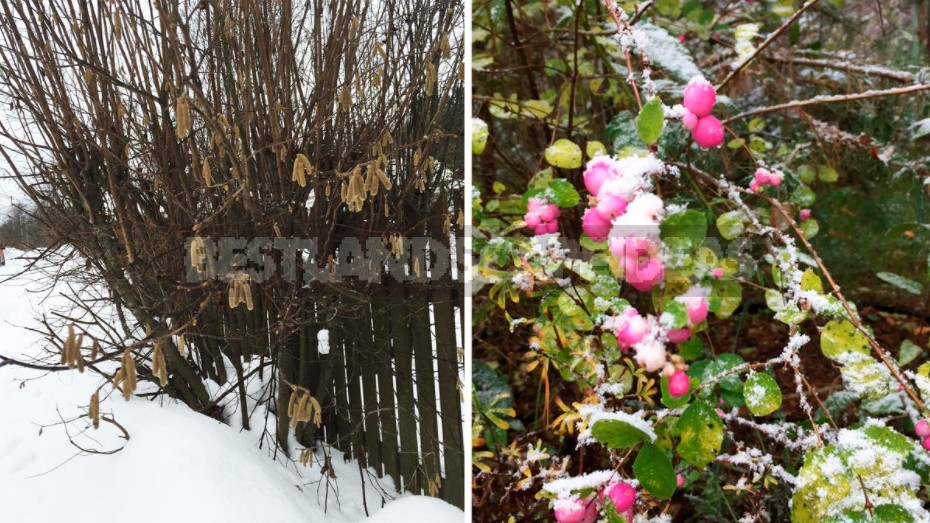
Winter is the time of celebration of the white deren with red shoots. In winter, its planting attracts the eye.
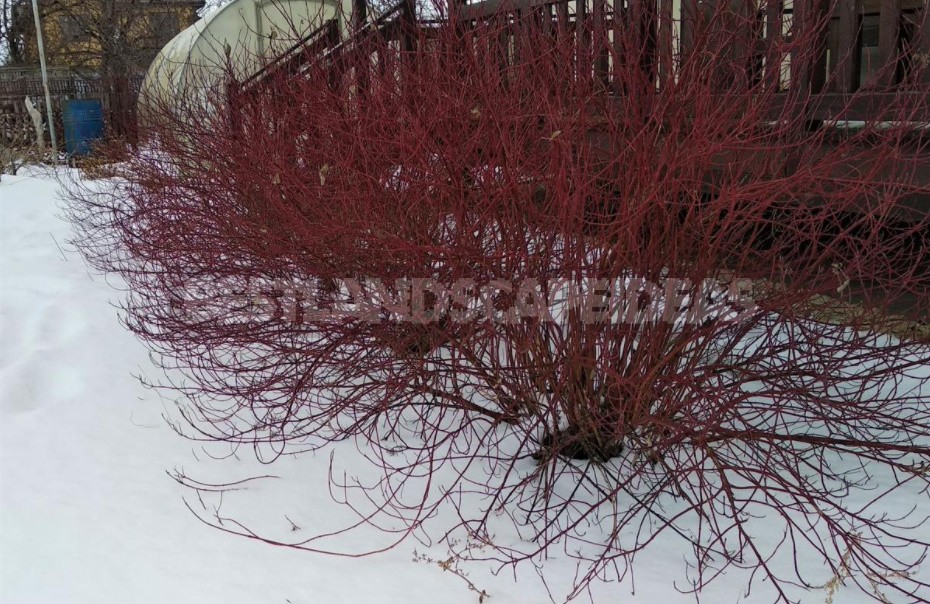
In winter, the garden reveals clear lines of buildings and a modest picket fence, which are picturesquely complemented by graphics of bare trees and bushes dusted with snow. At this time of year, garden furniture, benches and small architectural forms — all kinds of arches, grilles and pergolas-contribute to the decor.
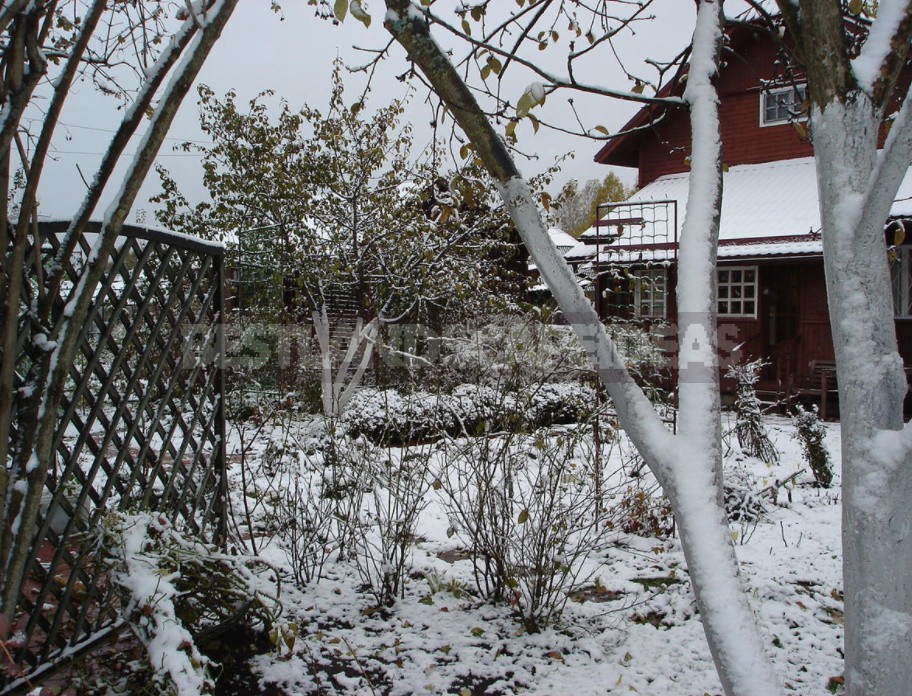
Every detail is important here. If in the summer a lot of things are hidden and decorated with greenery, then in the winter everything is in plain sight: a broken fence, which can not be repaired in any way, and a battered unpainted wooden gate, and firewood collected somewhere in the corner,and an abandoned barbecue. Snow is able to create real art objects from them.
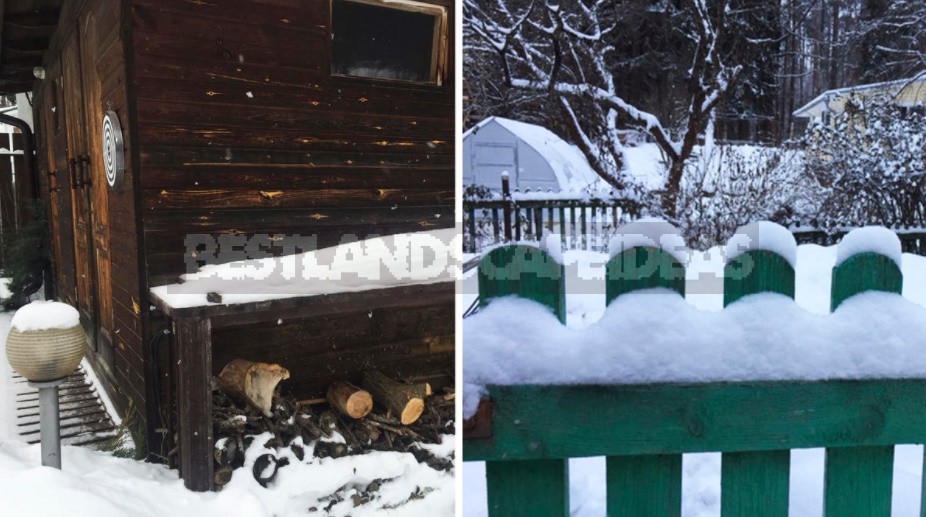
Essential conifers
The first violin in the decor of the winter garden, without a doubt, is played by evergreens. Coniferous trees are the main color accent in a monotonous snow-covered space.

And the color of their needles can be very different, despite the fact that they are called evergreen. Here and bluish, and ash-blue, and golden or bronze shades.
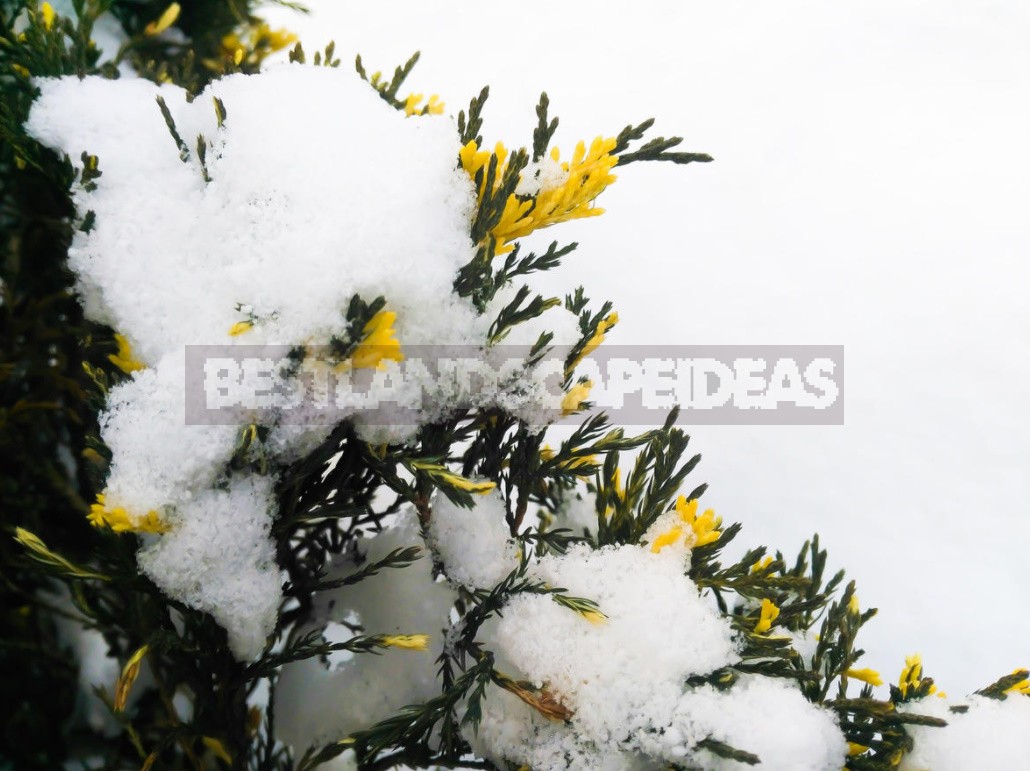
The shapes are also diverse: they can be columnar, pyramidal, spindly, round, or egg-shaped, or they can have no definition at all. But preference should be given to high-growing trees with a columnar or weeping crown shape, since the prostrate and dwarf varieties will hide under a blanket of snow.
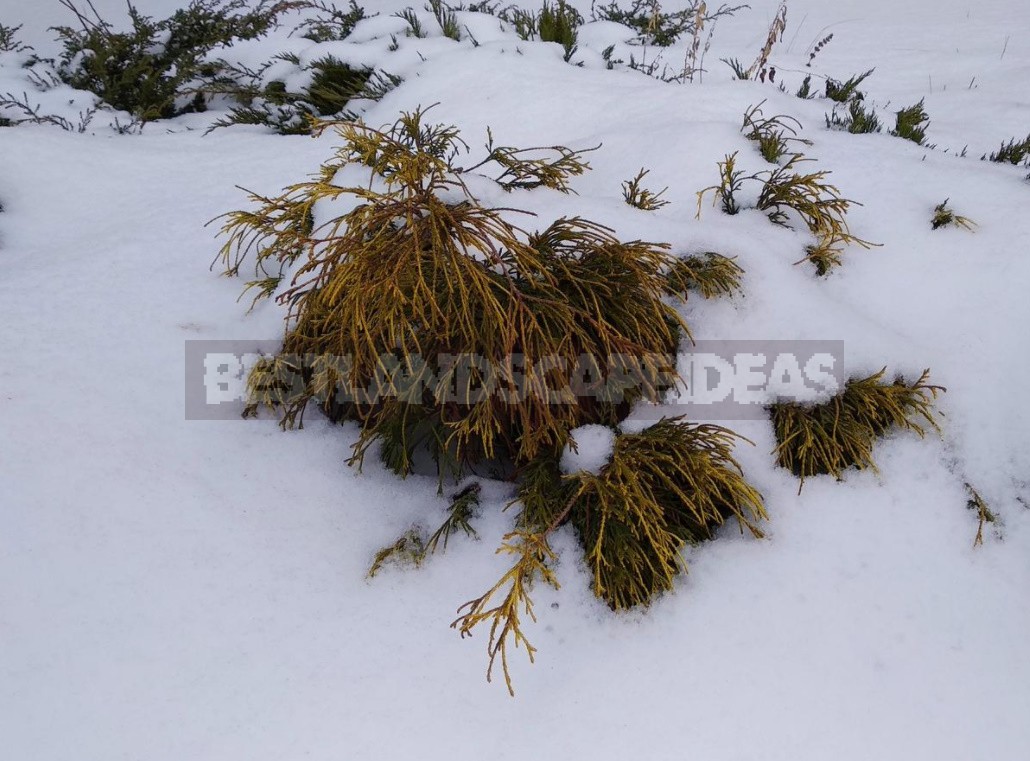
It is worth noting that ordinary pines and larches are not suitable for a small garden: they will be unnecessarily monumental. The latter also lose their needles by winter and do not represent any decorative value during this period.
The choice of coniferous plants is currently extremely wide. With the modern assortment available to us, there are a great many options. Do you want a Christmas tree? The well-known rather pretentious blue ‘Glauca’, which grows as a tall tree, is not suitable for a standard garden of 6 acres.
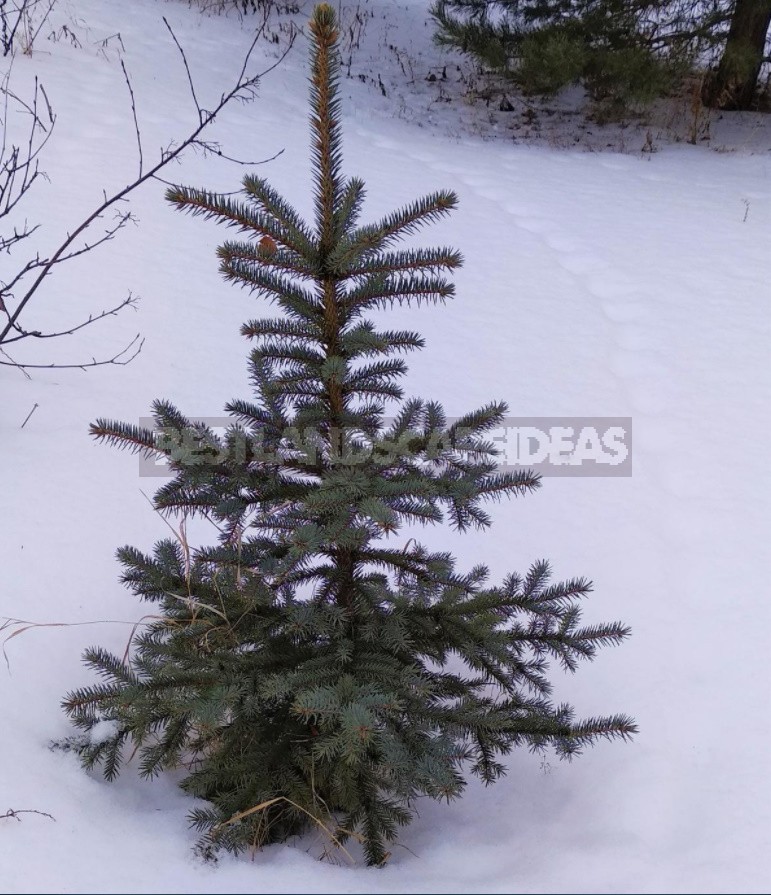
For small farmsteads, a low variety of ‘Hoopsii’ with blue-blue needles is suitable as a tapeworm. There is an ordinary spruce of the ‘Inversa’ variety, which has picturesque shoots hanging down. As a dominant, you can also plant Picea omorika with unusual needles: from above it is dark green, and from the inside-white-bluish. The beauty of this 4-meter tree is complemented by bright purple-purple shiny cones. Abies koreana is also famous for its purple cones. However, they will have to wait for about 10 years (it grows very slowly).
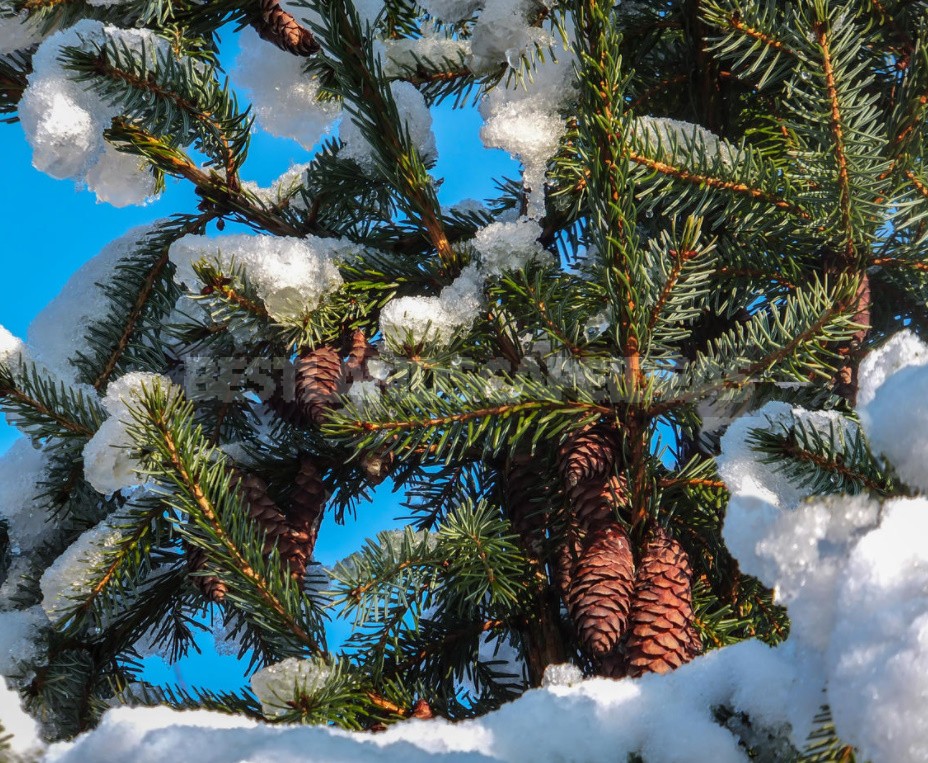
From junipers, plants of pyramidal and columnar forms are preferred, such as’ Skyrocket’,’ Hibernica’,’Blue Arrow’. Juniperus communis ‘Wallis’, a bush that has a vase-shaped shape and vertical shoots with hanging tips, looks exceptionally decorative. Its needles are gray-green in summer, and turn bronze in winter.
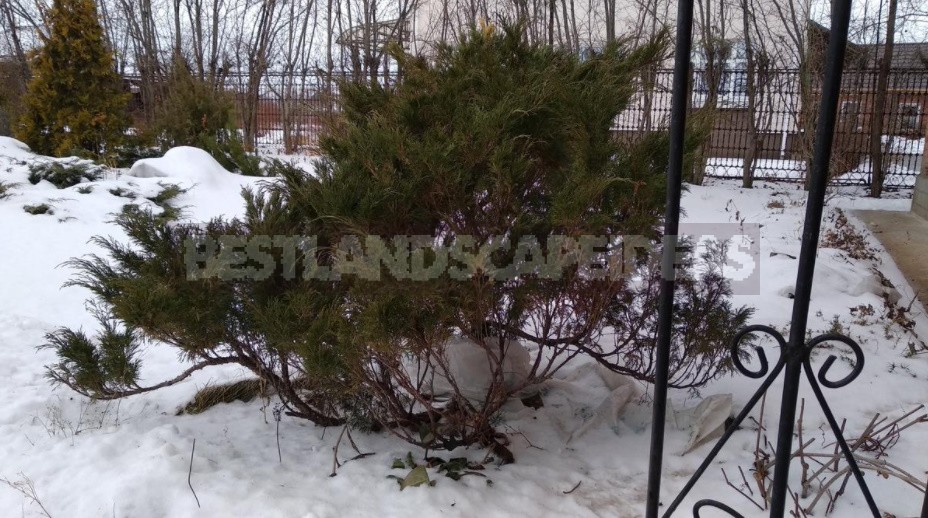
But the most correct choice will still be landing Thuja. This is, firstly, a relatively fast-growing crop, and secondly, they do not burn in the spring, unlike junipers and cypresses — a very valuable quality.
Among them, there are a huge number of varieties for every taste and budget, from miniature to impressive “giants”. I would like to note the following.
- ‘Pyramidalis Compacta’ with dark green needles is good as a dominant.
- ‘Cristata’ is famous for its unusual fan-shaped scallop shoots that grow in a spiral pattern.
- ‘Smaragd’ is an emerald variety. It is suitable both as a tapeworm and in mixed compositions. In addition, it is ideal for creating a topiary and turning it into a work of garden art, but this is already aerobatics in garden decoration!
Pay attention to the garden rarity-Tsuga canadensis ‘Pendula’, an elegant low tree with hanging branches. There will be something to admire in the snow-covered garden!
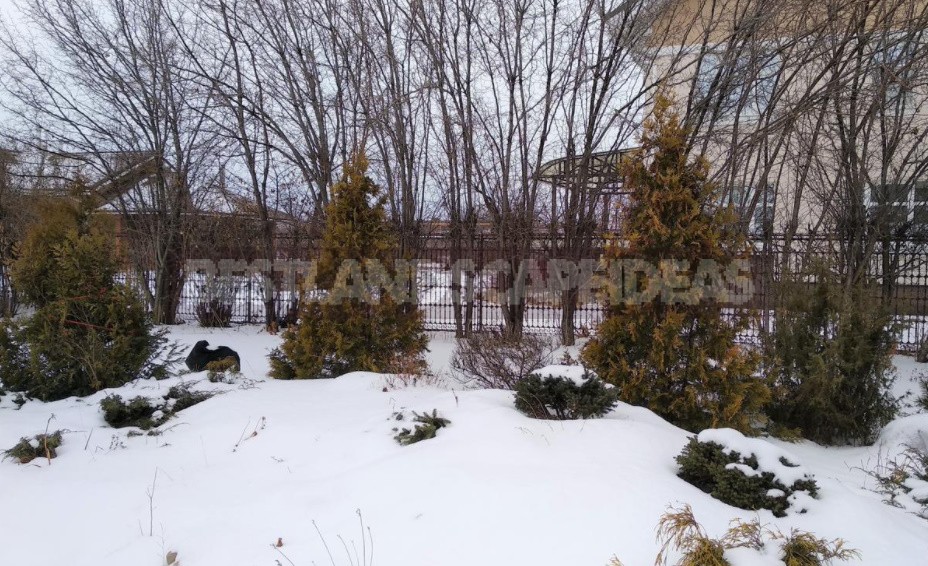
But listing these types and varieties, I want to warn you that you should not plant them all at the same time. You need to show a certain selectivity, think a hundred times before deciding to buy. It may happen that all of them, admirable individually, will compete with each other, and the garden will be overloaded.
According to reputable landscape designers, conifers in the garden should be no more than half of the number of all plants. The best solution may be to plant several specimens of the same species in different parts of the garden, but in such a way that they can be seen simultaneously from any point of view.
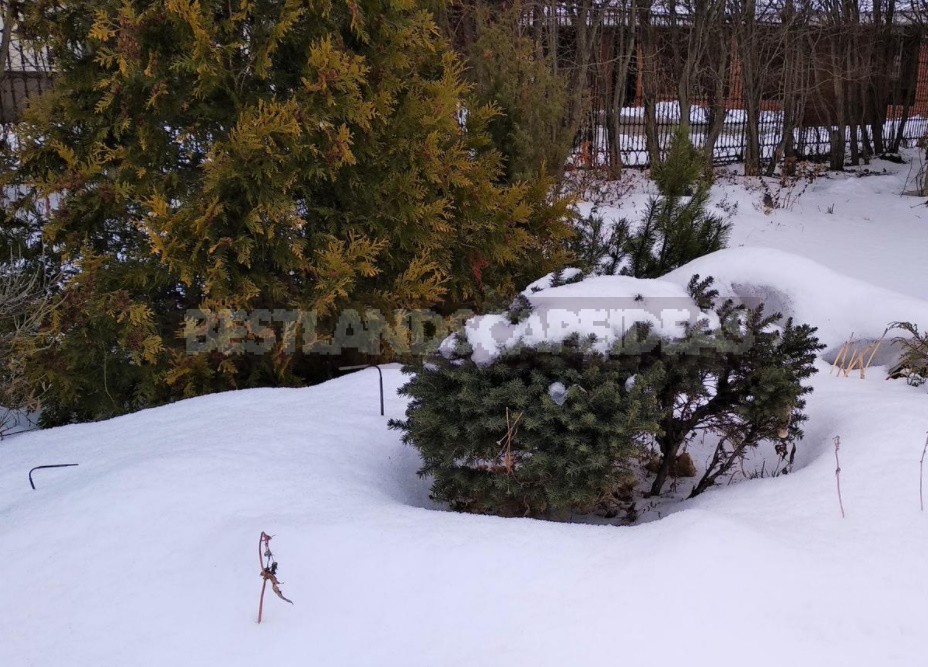
Man-made decorative elements
All of the above applies to natural decorative elements. But even a person can transform the winter appearance of the garden, turning it into a real fairy tale. First of all — at the expense of lighting. The day is short in winter, and elegant garlands of lamps will make the garden truly magical. And how wonderful look bright Christmas Tree balls, suspended here and there on the branches of trees!
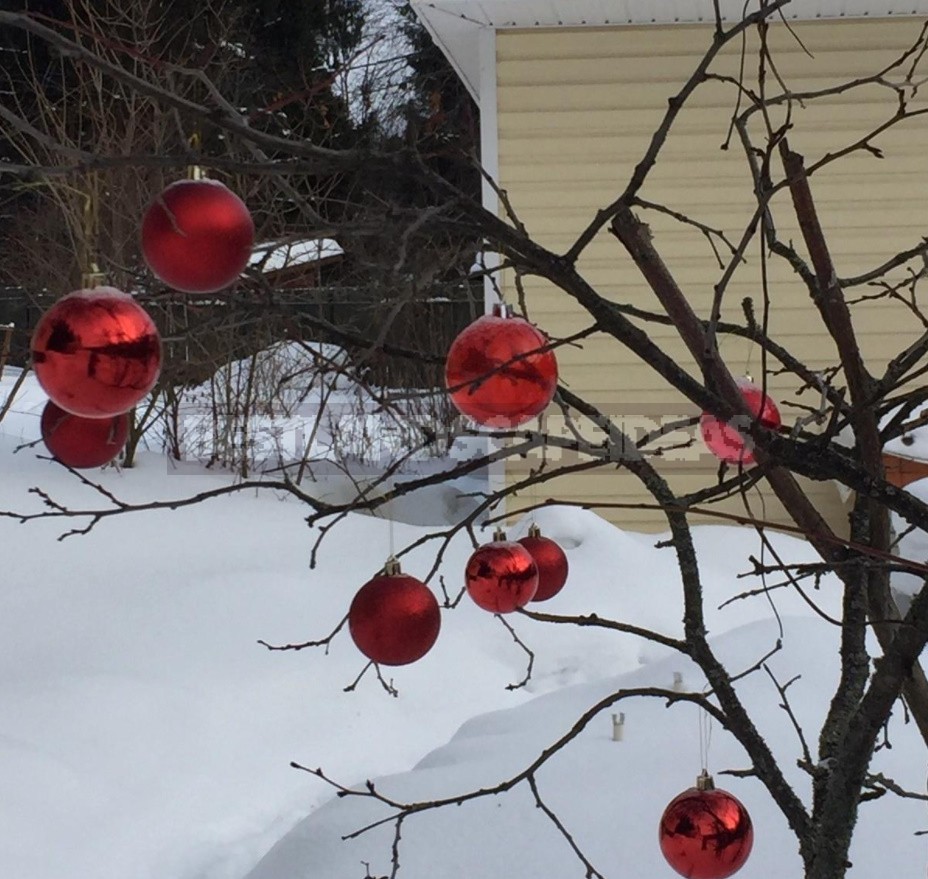
Stick snowmen with the children, arrange a competition for the best “sculpture”. If the winter is frosty, they will decorate your garden until the spring.
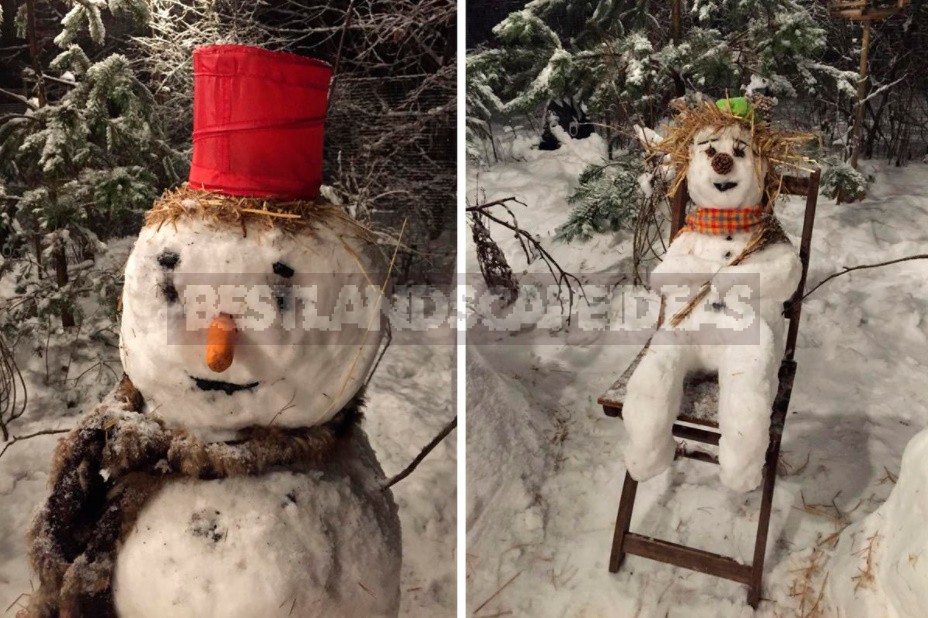
Even utilitarian protective caps for conifers can decorate the garden in winter. Sometimes they can be mistaken for fairy-tale dwarves who came to visit you and froze in the cold in silent admiration.
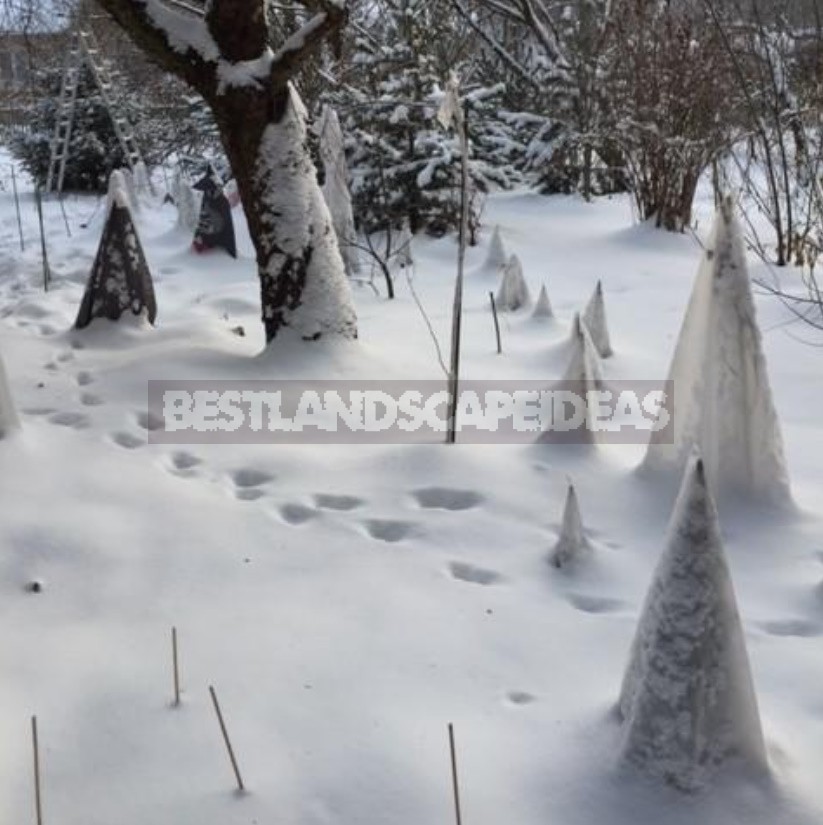
Hang feeders on the trees. They will not only add to the garden identity, but will also be extremely necessary for wintering birds.

In conclusion, I want to say that now, in the long evenings, it’s time to think about how to make your winter garden more decorative. Think about how you can improve the structure of the garden, what textured plants should be planted, what can add color to the strict range of the snow-covered area. And then make a plan of actions and landings for the spring, guided by these goals.
